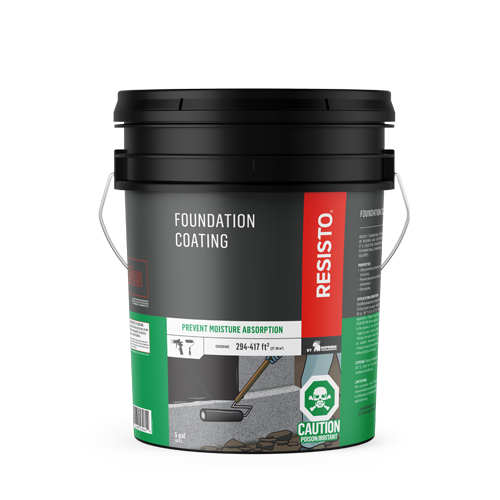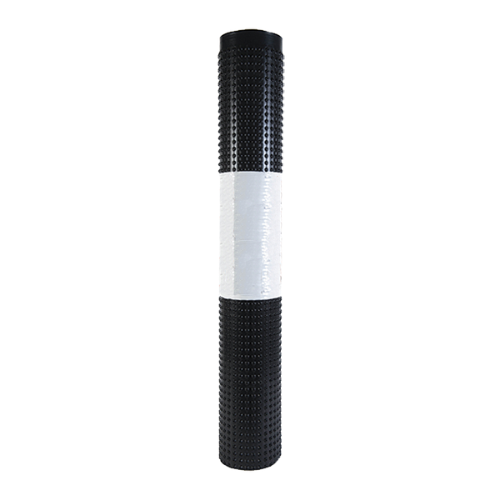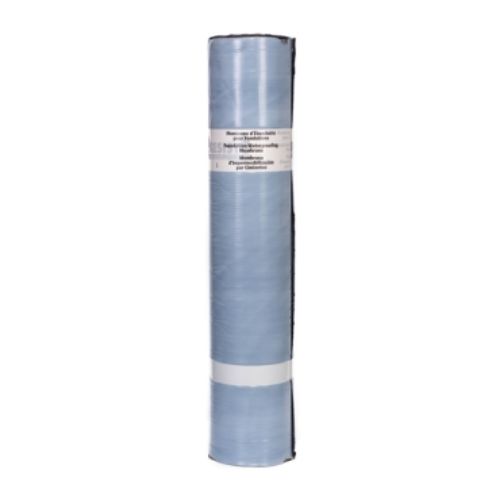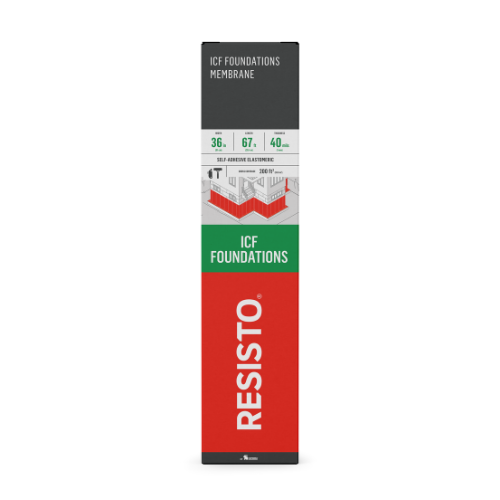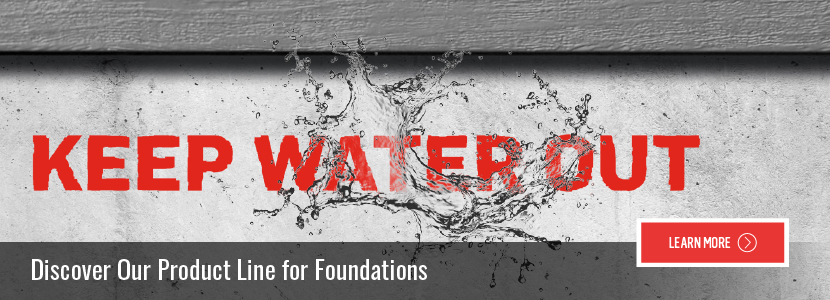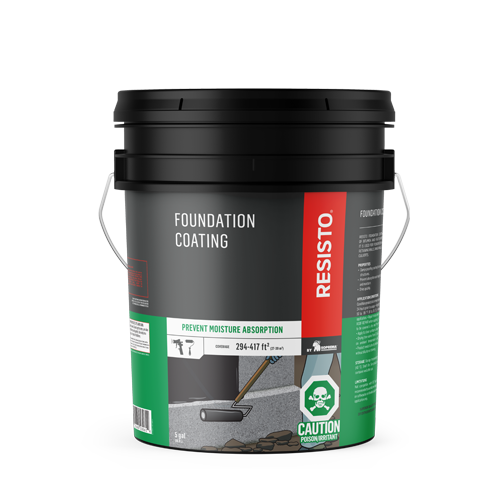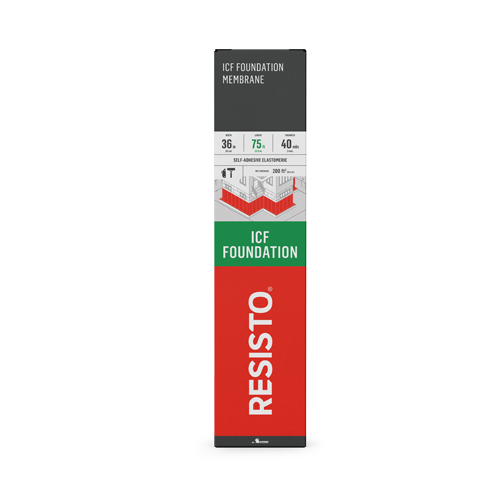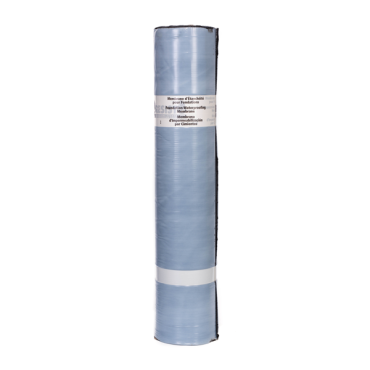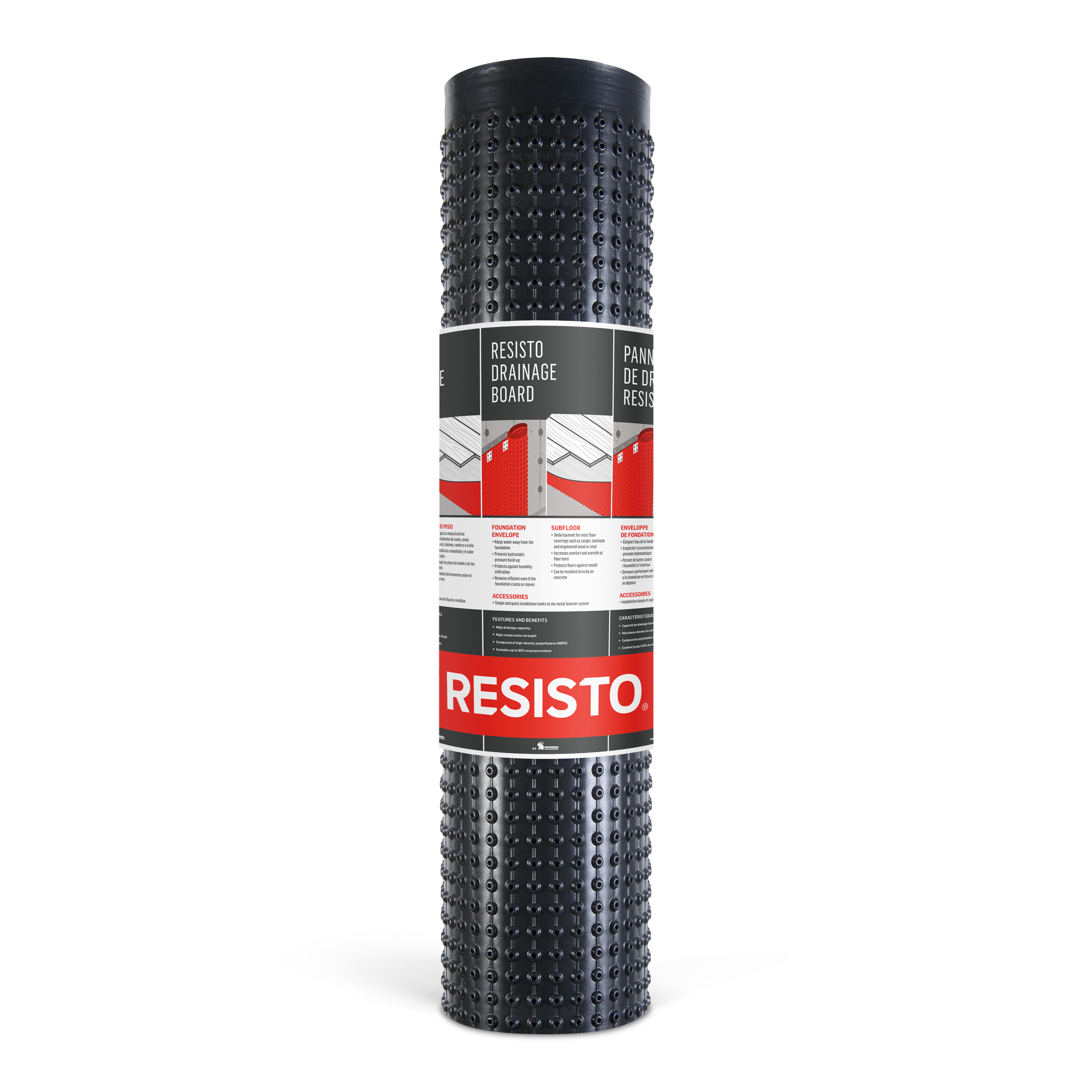Differentiating Dampproofing and Waterproofing
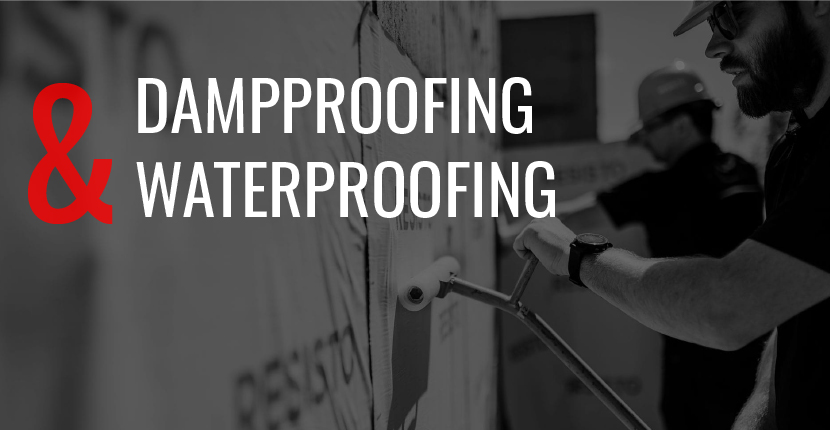
Why Focus on Below-Grade Waterproofing?
Although the most visible elements of a building usually receive more attention, we know that it is often the invisible components that have the most influence on the performance and longevity of the building, as well as on any possible consequences of construction-related cost overruns and delays. This is a reality for waterproofing elements as much as for everything else: the most visible materials are the most popular, but hidden materials can make the biggest difference in protecting a building.
Consider the foundations of a building. As a construction professional, you know that the foundation is the heart of a sound structure, but collectively we tend to avoid spending a lot of time designing and building it. Part of the problem is that foundations are rarely the most glamorous part of a building. When it comes to building design, below-grade levels like basements and garages sometimes suffer from an “out of sight, out of mind” mentality. Yet the quality of their workmanship could not be more important to the longevity of the building.
Discover our product line for foundations!
Failure to pay due attention to below-grade levels when designing a building can lead to significant problems. If the design, installation, and inspection of the foundation or basement are ignored, or if below-grade waterproofing (e.g. waterproofing of underground elements) is not included or properly installed, there can be very negative impacts on the longevity and performance of the building. Repair or rehabilitation works can be very costly when leaks are detected in below-grade waterproofing systems. In some cases, repairs may even be impossible since the cause of the leaks is buried and difficult to access. Therefore, to avoid expensive future renovations, it is worth focusing from the start on reducing the potential for humidity migration into a building’s foundation.
Two Ways to Protect Foundations against Water and Humidity
An unprotected foundation allows water to enter the concrete by gravity or capillarity. It is therefore vital to waterproof the outer face of the foundation rather than its inner face to prevent water from making its way into the concrete, then creating high humidity levels in the building as well as mould growth.
There are many choices to make when it comes to protecting foundations. Different products have different resistance to hydrostatic pressure; the pressure the project must withstand may affect your design. Using a product in full adhesion to the substrate, such as elastomeric membranes, will generate more resistance in the long run.
First, you need to decide whether you are dampproofing or waterproofing.
Dampproofing
In the context of below-grade protection, dampproofing is the treatment of a surface to make it resistant to the passage of humidity in the absence of hydrostatic pressure (e.g. if the level of the foundation slab is above the height of the water table). It is considered as a barrier against humidity only. It offers no protection against water accumulation when the drainage at the base of the foundation walls is not functioning properly, and no protection against cracks in the concrete.
Humidity from the soil can migrate to the interior of a building and have several effects, including the following:
- Creating humidity on the surface and inside the walls;
- Making a residence uncomfortable, even damaging to the health of the occupants;
- Promoting mould growth, thereby altering air quality.
Protective measures are intended to prevent soil moisture from being absorbed by concrete and transferred to the inside of the basement. They must be applied properly on the outside of the foundation walls located below ground level.
It is important to note that dampproofing cannot be used if there is a realistic risk that hydrostatic pressure conditions will occur. Indeed, the National Building Code only requires waterproofing the foundations in the presence of hydrostatic pressure on the foundation. Otherwise, only the minimum is required, namely dampproofing of below-grade foundations (Part 9 of the Code). The use of a foundation coating is the minimum protection required by the National Building Code (NBC) for foundations below ground level (see the National Building Code for more details: Sections 9.13.2 and 9.13.3).
If not properly filled, holes punched in walls for formwork fasteners are an important cause of water infiltrations. All holes in the foundation walls must be sealed with mortar or a moisture-repellent material such as the following:
- Plastic cement; or
- Elastomeric sealant before spraying the bituminous coating.
Waterproofing
Waterproofing, on the other hand, is defined by a perfect protection against water infiltration. It consists in treating a surface with a resistant, consistent and durable product to prevent the passage of water under hydrostatic pressure conditions. It provides protection in case of water accumulation when drainage at the bottom of foundation walls does not work properly. In short, a true protection against water infiltration! It is the solution for all below-grade applications that are or may be exposed to hydrostatic pressure, especially permanently (e.g. high water table) or in areas prone to flooding.
It resists penetration of water driven by hydrostatic pressure and protects foundations in the event of cracks thanks to its elongation properties. That is, they will continue to provide a tight barrier in case of any small cracks that may appear.
Discover our product line for foundations!
A project located at the water table level (where the water table is higher than the level of the waterproofing system or structure) requires a waterproofing material capable of withstanding the hydrostatic pressure conditions created by the water table.
Important fact: The membrane should always be installed on the pressure side to ensure the integrity of the waterproofing barrier. This method is called positive waterproofing.
Solutions That Meet All Needs
No matter your project and your needs, RESISTO offers several materials to protect foundations, from dampproofing to waterproofing solutions:
RESISTO has the perfect waterproofing solution: the FOUNDATION COATING, which can be used with the DRAINAGE BOARD to promote water drainage.
RESISTO also offers a full line of products specifically designed for foundation waterproofing. Two main factors influence membrane aging: heat and UV rays. Being installed below the ground, they are not exposed to these factors, thus giving them excellent durability. Here is how our high-performance SBS (styrene-butadiene-styrene) modified bitumen membranes stand out:
- Excellent adhesion to most substrates (concrete, masonry, and wood)
- Increased resistance to tearing and puncture
Insulated concrete forms (ICF) are a very distinct and increasingly widespread type of structure which stands out in the field of foundations. This system, where walls are insulated and in which the concrete is poured, also includes the steel reinforcement necessary to the strengthening of the concrete walls. The ICF WATERPROOFING MEMBRANE is specially designed for this type of application. This self-adhesive membrane is directly installed on the forms once the concrete is poured, just like in a conventional system.
